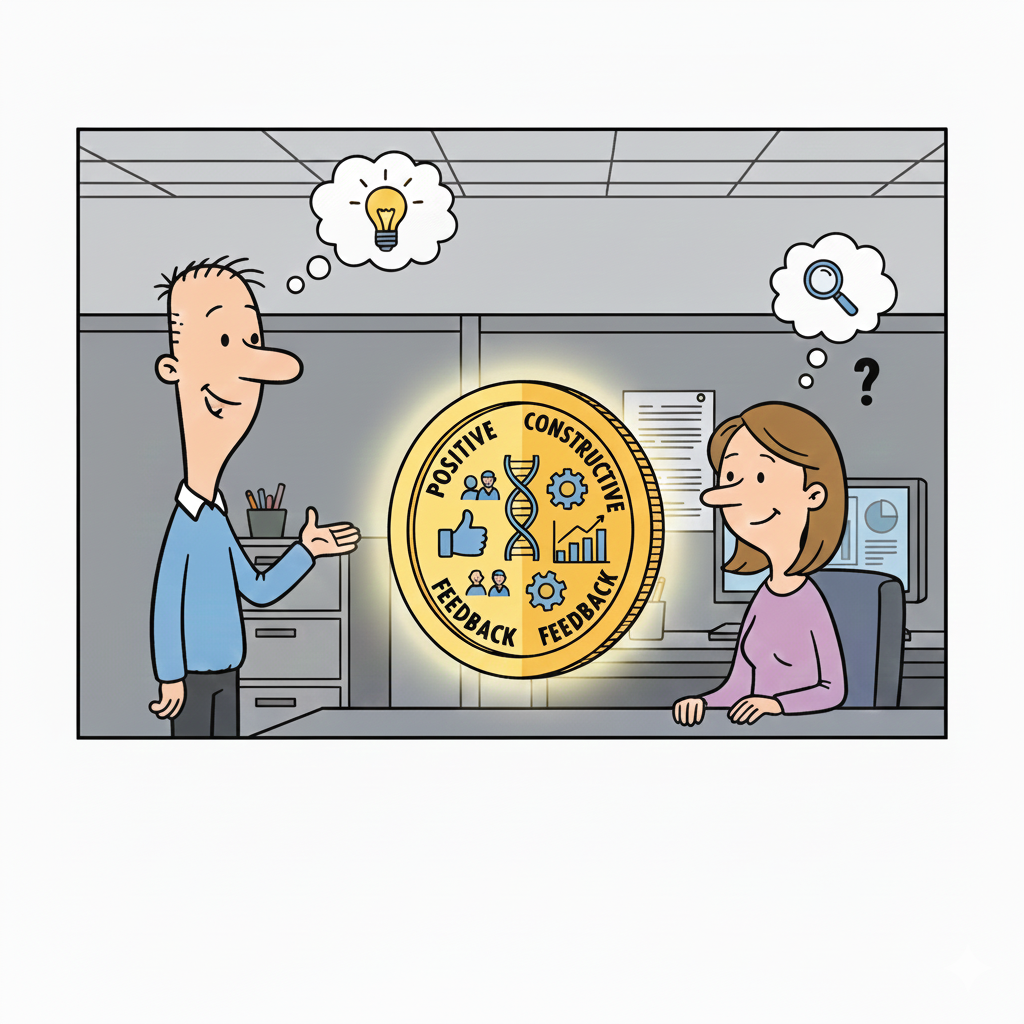Positive and Constructive Feedback: Two Sides of the Same Coin Driving Engagement and Business Performance.
For more than two decades, organisations have poured energy, time, and money into engagement initiatives. Surveys are deployed, dashboards light up with colour-coded metrics, and new programmes emerge promising to reignite employee motivation. And yet, as Gallup’s latest data show, the reality is sobering: only 23% of employees globally feel engaged at work, with managers experiencing the steepest decline. In recent years, managers have been caught in a growing squeeze between shifting executive priorities and rising employee expectations.
In their conversation on the Coaching for Leaders podcast, Dave Stachowiak and Mark Crowley explore a critical question: How can so much effort produce so little meaningful change?
Mark Crowley offers a refreshingly candid answer: we measured engagement, but we didn’t transform the behaviour of leaders. We built tools but neglected the human experience. We captured employee sentiment but rarely changed the daily interactions through which managers shape trust, performance, and well-being. And nowhere is this gap more visible than in one of leadership’s most sensitive responsibilities: giving feedback.
Managers genuinely care. They want to support, encourage, and develop their people. Yet, in the effort to be both corrective and kind, many fall into the most common leadership trap: mixing praise with criticism. The intention is compassionate; the effect is corrosive. Employees learn to anticipate a “but…” whenever they hear praise. It feels scripted, insincere, and emotionally draining.
Research backs this up. The “feedback sandwich” does not build trust — it erodes it. People do not want praise as padding; they want clarity, honesty, and respect.
But clarity alone is not enough. Humans are wired with a negativity bias, reacting far more intensely to constructive feedback than to positive reinforcement. This is why Crowley draws on John Gottman’s research: thriving relationships maintain a 4-to-1 ratio of positive to negative interactions. This is not about being nice — it is emotional mathematics. One piece of constructive feedback withdraws four units of emotional credit. Leaders must make consistent deposits before they can afford a withdrawal.
Still, withdrawals are essential. As Kim Scott reminds us in Radical Candor, tough conversations are acts of care. Avoiding them doesn’t protect anyone — it simply postpones the chance for learning, growth, and performance improvement. When delivered with sincerity, curiosity, and a commitment to development, honest feedback becomes a profound expression of respect.
Crucially, these two practices — appreciation and critique — must remain distinct. Praise must stand alone so it feels genuine. Constructive feedback must stand alone so it remains clear. When separated, each becomes more powerful. When blended, both lose credibility.
Crowley also challenges another popular misconception: that organisational culture determines engagement. It doesn’t. Employees don’t experience “the organisation” — they experience their team. Engagement lives or dies at the local level: in daily relationships, in team norms, and in the manager’s behaviour. A brilliant corporate culture statement cannot compensate for a dysfunctional team dynamic. Yet a strong team can thrive even within a struggling organisation.
And the most transformative space for shaping team culture?
The 1:1 conversation.
A well-crafted 1:1 isn’t a task review. It is the heartbeat of leadership. It is where psychological safety is created, recognition is offered, concerns are explored, challenges are acknowledged, and performance is elevated. It is also where leaders demonstrate their most essential responsibility: caring enough to develop, support, and be honest with someone — even when it feels uncomfortable.
One of Crowley’s most striking insights is that constant praise, when used as a shield against discomfort, doesn’t energise leaders — it exhausts them. Praise becomes emotional labour instead of genuine acknowledgement. When leaders feel they must always be positive, they lose the freedom to be authentic, and authenticity is the true fuel of meaningful leadership.
Separating praise from critique frees both leaders and employees. It restores sincerity. It rebuilds trust. It strengthens team culture. Most importantly, it shifts engagement from a corporate aspiration to a lived, daily reality.
Leadership doesn’t change through surveys; it changes through behaviour. And behaviour changes through the smallest, most human interactions — especially the moments when we speak truth with care, presence, and courage.
Gallup now suggests that organisations must rethink managerial roles entirely. By redesigning responsibilities around performance coaching, leaders can better support a workplace defined by learning, adaptability, and human-centred performance. This aligns fully with the insights Dave and Mark explore.
Managers and leaders must focus their attention on their people’s growth. Both constructive and positive feedback create meaningful opportunities for development, demonstrating genuine care for employees’ potential. To truly strengthen engagement, leaders must champion a culture grounded in continuous feedback, development, and coaching, equipping managers with the tools and confidence to engage their teams (Eduardo Briceno, The Performance Paradox).
When leaders prioritise this, they create an environment where growth, learning, and curiosity thrive — and where fear diminishes. As a result, leading change becomes far easier; people feel supported, informed, and confident navigating what comes next. Engagement is no longer a metric — it becomes a lived experience.
Before you go, I’d love to hear from you:
In your experience, what has made constructive feedback easier — or harder — to receive?
How do you personally balance recognition and correction in your 1:1 conversations?

